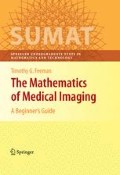Abstract
Magnetic resonance imaging, or MRI, is an imaging technique that has grown alongside CT and that, like CT, has produced Nobel laureates of its own. Where the physics of CT is fairly straightforward—X-rays are emitted and their changes in intensity measured—MRI is based on the generation of a complex of overlapping, fluctuating electromagnetic fields that must be precisely controlled. Mathematically, the effects of the electromagnetic fields on the atomic nuclei in the sample being studied are modeled with differential equations. The Fourier transform is the primary tool for analyzing the electrical signals generated by the motions of atomic nuclei under the influence of these fields.
Access this chapter
Tax calculation will be finalised at checkout
Purchases are for personal use only
Preview
Unable to display preview. Download preview PDF.
Author information
Authors and Affiliations
Corresponding author
Rights and permissions
Copyright information
© 2010 Springer-Verlag New York
About this chapter
Cite this chapter
Feeman, T.G. (2010). MRI—An Overview. In: The Mathematics of Medical Imaging. Springer Undergraduate Texts in Mathematics and Technology . Springer, New York, NY. https://doi.org/10.1007/978-0-387-92712-1_10
Download citation
DOI: https://doi.org/10.1007/978-0-387-92712-1_10
Published:
Publisher Name: Springer, New York, NY
Print ISBN: 978-0-387-92711-4
Online ISBN: 978-0-387-92712-1
eBook Packages: Mathematics and StatisticsMathematics and Statistics (R0)

